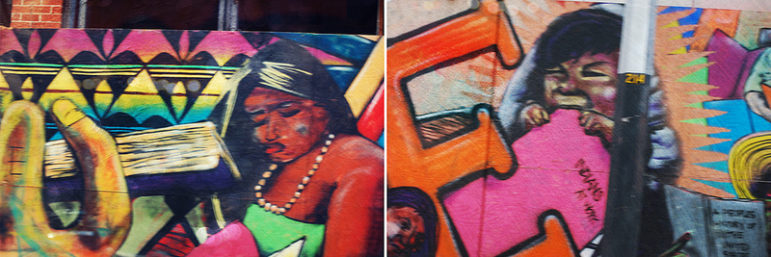
June 19, 2016; KGBT-TV (Rio Grande Valley, TX)
More than 50 percent of the public school students in Texas are Hispanic, a demographic that, according to the Hobby Center at Rice University, is expected to grow to 67 percent by 2050. So it is no surprise that more than 200 teachers and community members showed up last Saturday in San Antonio to address the issue of Mexican-American studies in the state.
The summit’s goals were to identify institutional barriers to developing Mexican-American studies programs and to scope out a plan of action for introducing the programs into additional districts beyond the fewer than 10 districts that presently offer the curriculum. But of particular note in the discussions was the sole textbook submitted to the Texas State Board of Education in its call for materials that could be used by districts wishing to implement the curriculum. The book, entitled Mexican American Heritage, has been broadly criticized and described as inaccurate, politically biased and, in the words of one State Board of Education member, “an intentional changing of our history.”
As Paul A. Reyes writes in an opinion piece for CNN Opinion:
The problem? For starters, the Mexican American Heritage text asserts that some Mexican-Americans during the civil rights era of the 1960s “opposed Western civilization and wanted to destroy this society.” It links Mexican-Americans to the drug trade and illegal immigration and says that Mexican-Americans are ambivalent about assimilating into the United States.
Mexican-American Heritage is believed to have been published by Momentum Instruction, which develops instructional materials aligned with districts and schools. One of the book’s contributors is Cynthia Dunbar, a Christian activist and former Texas State Board of Education member who, while she was serving, called the public education system “tyrannical” and published a book, One Nation Under God: How the Left is Trying to Erase What Made Us Great. According to the School Library Journal, Dunbar sits at the helm of Momentum Instruction.
The politics of offering ethnic studies programs alongside traditional public school curricula are well known. Just last year, the Ninth Circuit Court of Appeals ruled that a ban on ethnic studies in the Arizona public schools was not “overbroad, but may have violated students’ equal protection rights.” The ban was put into effect in 2010 when Governor Jan Brewer signed a law prohibiting schools from teaching classes designed for students of a particular ethnic group or risk losing up to 10 percent of their state funds. Both proponents of the ban and activists opposed to it are following the ruling closely, as it allows plaintiffs in Arizona to present evidence at trial to determine whether Arizona legislators enacted the law with a discriminatory intent.
The Arizona ban was specifically targeted against Mexican studies classes in Tucson that Tom Horne, the then-state superintendent of public instruction, called “harmful and dysfunctional.” His successor, John Huppenthal, went further, claiming the classes encouraged Latino students to “hate other races.” He garnered public attention at the time when he maintained that the use of the song “Take the Power Back” by Rage Against the Machine in a Mexican-American history class advocated the overthrow the U.S. government.
Ironically, as J. Weston Phippen wrote in the Atlantic following the Ninth Circuit Court’s ruling, the action in Arizona spurred a movement to duplicate that Mexican-American studies class in classrooms across the country, spreading at a “rate that no one could have imagined before Arizona banned the class in 2010.”
As Curtis Acosta, a former teacher at Tucson High Magnet School, put it at the time, the Mexican-American studies program was a way to “engage those students who found school rote and unexciting, or those who might otherwise drop out.” In fact, as Phippen noted in his article, educational research, including a report published by the University of Arizona, demonstrates a link between offering the program and increased graduation rates, higher grades, better test scores, and college enrollment. In 2002, the Tucson school district began collecting data showing that students who participate in these courses perform better on AIMS, the state’s standardized test, than students who do not.
Sign up for our free newsletters
Subscribe to NPQ's newsletters to have our top stories delivered directly to your inbox.
By signing up, you agree to our privacy policy and terms of use, and to receive messages from NPQ and our partners.
When organizers began planning for the Texas summit, the number of attendees was not expected to exceed sixty, much less the more than 200 that showed up. No doubt interest was heightened because of the upcoming election and the increasing rhetoric around immigration, language politics, and border fences. But well before even the 2010 Arizona ban, educators serving students who are either themselves immigrants, or who come from families of first and second generation immigrants, have been asking themselves how they can acknowledge their students’ stories and empower them to participate in the democratic process.
Whatever the decision surrounding the adoption of the controversial textbook, educators agree that developing a curriculum around ethnic studies is frequently difficult, and there is a push to develop textbooks and instructional materials that both engage students and present information and data factually and objectively. As Patrick Michels, who covers school reform for the Texas Observer notes, districts across the state have already been developing their own Mexican-American studies courses, using texts such as F. Arturo Rosales’ Chicano! The History of the Mexican-American Civil Rights Movement. And thanks to a law passed in 2011, school districts may choose their own textbooks and materials, which is why some publishers may be bypassing the State Board of Education’s highly politicized review process.
The NEA published a research paper several years ago on the academic and social value of ethnic studies programs in the public schools. What they found were that there are distinct features of the curricula that make a difference. “Simply infusing representation of racially and ethnically diverse people into curriculum only marginally affects students’ attitudes because racial attitudes are acquired actively rather than passively.” On the other hand, curricula that teach directly about racism have a stronger positive impact.
A large body of research in higher education that examines the impact of various diversity experiences, particularly course-taking and interracial interaction, reports quite consistently that such courses have a positive impact on “democracy outcomes,” particularly when they include cross-group interaction and particularly on white students, since exposure to a systematic analysis of power and cross-racial interaction is newer to white students than to students of color…In short, there is considerable research evidence that well-designed and well-taught ethnic studies curricula have positive academic and social outcomes for students.
The research describes ethnic studies by noting, foremost, what it is not:
Although commonly described as “divisive,” un-American, and teaching racial separatism and even overthrow of the U.S. government, …ethnic studies curricula very intentionally include historically marginalized communities and students in a multicultural American curriculum and narrative, often supporting and developing cross-group communication. Second, although commonly perceived as touchy-feely and non-academic—even as lowering academic standards, …ethnic studies curricula are academically based, usually designed to improve students’ academic performance, and sometimes explicitly focus on university preparation.” (emphasis added)
In my experience teaching English language learners, the majority of whom are Spanish speakers, I know the work that goes into finding and introducing meaningful content that will both support core instruction and reflect the backgrounds and interests of my students. (And of course it’s further complicated by the fact that there is no one monolithic “Latino culture”—students come from different countries, backgrounds, and educational and income levels, giving an entirely new meaning to “differentiated instruction.”) Fortunately, students themselves are often a wonderful source of information about their respective countries and, if asked about issues and topics of particular relevance to their life in the U.S., are quite happy to get the discussions going.
They are also acutely aware of the social, political and economic forces taking place around them and are eager to find and establish their own roles within the broader cultural context. I’ve seen time and again how students sit up and pay rapt attention when watching a video from the PBS series, Latino Americans, say, or interpreting work written by individuals from their respective countries and cultures.
Most importantly, well-designed ethnic studies curricula both prepare students to succeed in American culture while embracing their own identities. In other words, it’s not mutually exclusive to instill ethnic pride in students by offering content about their history while at the same time helping them, through lessons in U.S. civics and culture, develop a parallel sense of pride and accomplishment as they move into the American mainstream.—Patricia Schaefer











